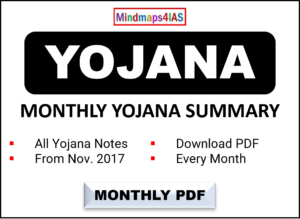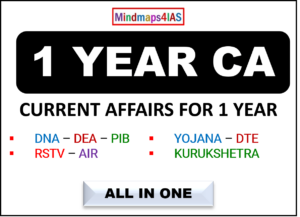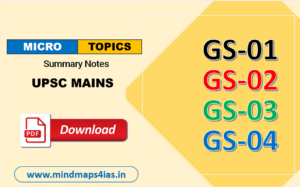UPSC Mains-2023 – General Studies 1 Trend Analysis
| No. | Question | Why UPSC Asked this question? |
| 01 | Explain the role of geographical factors towards the development of Ancient India. (Answer in 150 words) 10 |
|
| 02 | What was the difference between Mahatma Gandhi and Rabindranath Tagore in their approach towards education and nationalism? (Answer in 150 words) 10 |
|
| 03 | Bring out the socio-economic effects of the introduction of railways in different countries of the world. (Answer in 150 words) 10 |
|
| 04 | Discuss the consequences of climate change on the food security in tropical countries. (Answer in 150 words) 10 |
|
| 05 | Why is the world today confronted with a crisis of availability of and access to freshwater resources? (Answer in 150 words) 10 |
|
| 06 | How are the fjords formed? Why do they constitute some of the most picturesque areas of the world? (Answer in 150 words) 10 |
|
| 07 | Why is the South-West monsoon called ‘Purvaiya’ (easterly) in Bhojpur Region? How has this directional seasonal wind system influenced the cultural ethos of the region? (Answer in 150 words) 10 |
|
| 08 | Do you think marriage as a sacrament in loosing its value in Modern India? (Answer in 150 words) 10 |
|
| 09 | Explain why suicide among young women is increasing in Indian Society. (Answer in 150 words) 10 |
|
| 10 | Child cuddling is now being replaced by mobile phones. Discuss its impact on the socialization of children. (Answer in 150 words) 10 |
|
| 11 | What are the main features of Vedic society and religion? Do you think some of the features are still prevailing in Indian society? (Answer in 250 words) 15 |
|
| 12 | What were the major technological changes introduced during the Sultanate period? How did those technological changes influence the Indian society?(Answer in 250 words) 15 |
|
| 13 | How did the colonial rule affect the tribals in India and what was the tribal response to the colonial oppression?(Answer in 250 words) 15 |
|
| 14 | Comment on the resource potentials of the long coastline of India and highlight the status of natural hazard preparedness in these areas.(Answer in 250 words) 15 |
|
| 15 | Identify and discuss the factors responsible for diversity of natural vegetation in India. Assess the significance of wildlife sanctuaries in rain forests regions of India.(Answer in 250 words) 15 |
|
| 16 | Why did human development fail to keep pace with economic development in India? (Answer in 250 words) 15 |
|
| 17 | From being net food importer in 1960s, India has emerged as a net food exporter to the world. Provide reasons. (Answer in 250 words) 15 |
|
| 18 | Does urbanization lead to more segregation and/or marginalization of the poor in Indian metropolises? (Answer in 250 words) 15 |
|
| 19 | Why is caste identity in India both fluid and static? (Answer in 250 words) 15 |
|
| 20 | Discuss the impact of post-liberal economy on ethnic identity and communalism. (Answer in 250 words) 15 |
|
















